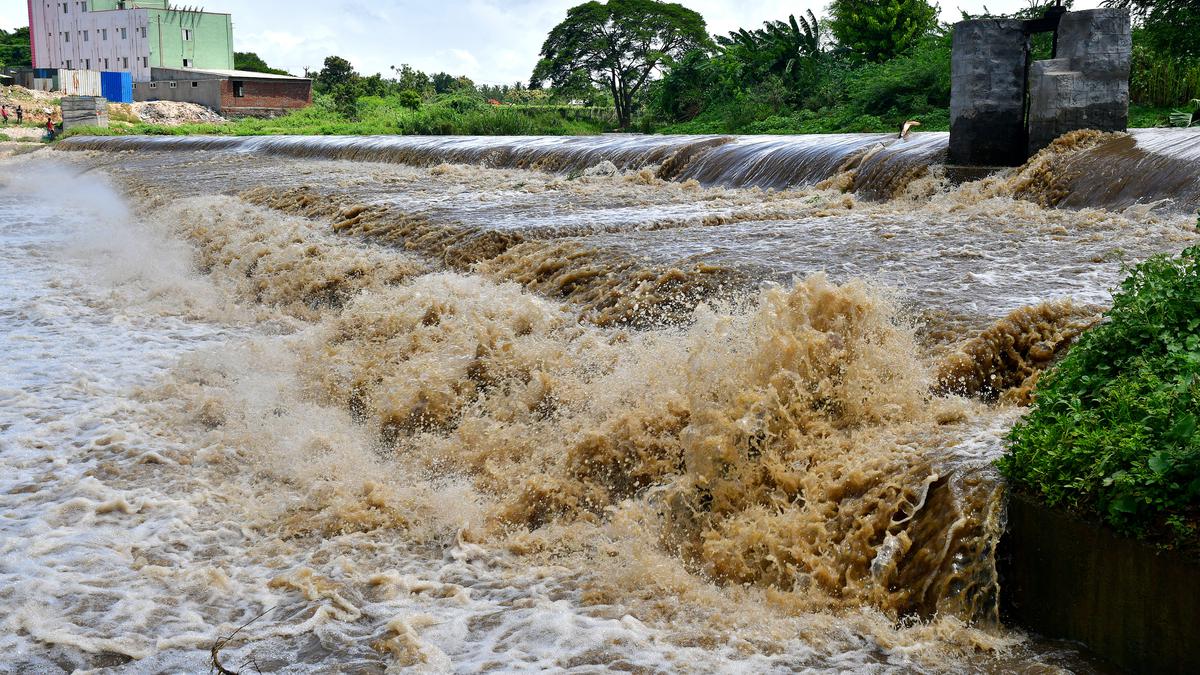
Study in T.N. on impact of greenhouse gas emissions from waterbodies, points to vicious cycle, say researchers
The Hindu
Against the backdrop of the ongoing debate on the effectiveness of agriculture and forestry as carbon sinks for mitigating climate change, a new study by the Tamil Nadu Agricultural University (TNAU) in collaboration with four Swedish universities has established the vicious link between temperature and natural greenhouse gas emissions from streams and lakes, and water discharge.
Against the backdrop of the ongoing debate on the effectiveness of agriculture and forestry as carbon sinks for mitigating climate change, a new study by the Tamil Nadu Agricultural University (TNAU) in collaboration with four Swedish universities has established the vicious link between temperature and natural greenhouse gas emissions from streams and lakes, and water discharge.
The study, undertaken by a team of researchers from TNAU and the Swedish universities: Linköping University, the Swedish University of Agricultural Sciences, Stockholm University and the University of Gothenburg, involved a new approach, by which a large number of measurement points were used over a long period of time in both streams and lakes, across an entire catchment area. In the study, published in the scientific journal Limnology and Oceanography Letters, the researchers quantified the amounts of carbon transported from the soil in a catchment area to streams and lakes, and to the atmosphere.
“Landscape carbon sinks may become less effective in the future. The knowledge generated from the study showed that with increased precipitation, a larger amount of carbon may be washed into streams and lakes and that an increased share of this carbon could also end up in the atmosphere. This knowledge is necessary to assess how man-made climate change is altering greenhouse emissions from natural landscapes, and has large implications for climate change mitigation measures, ” says Sivakiruthika Balathandayuthabani, Ramanujan Fellow at the School of Post Graduate Studies, TNAU, lead author of the study.
Human use of fossil fuels has added a carbon flux to the atmosphere, driving climate change. A great concern now is how the changed climate affects the balance of the natural greenhouse gas fluxes. If natural emissions increase faster than natural sinks, we get a vicious circle: a self-reinforcing effect by which increased emissions affect the climate resulting in greater emissions. This would accelerate climate change even further, explains Ms. Sivakiruthika.
“Natural greenhouse gas fluxes are in the process of becoming partly anthropogenic because they are being impacted by anthropogenic climate change. The United Nations climate panel, Intergovernmental Panel on Climate Change (IPCC), has not been able to fully consider this, because there is too little information about climate feedbacks, which are taking place gradually, and vary between environments, making them difficult to measure,” says David Bastviken of Sweden.
Important, but poorly-mapped contributions to the natural greenhouse gas fluxes come from streams and lakes. They receive large quantities of carbon from the soil in their upstream catchment areas and release a large quantity of greenhouse gases into the atmosphere in relation to their surface area, as per the study, which was funded by the Swedish Research Council FORMAS, the European Research Council, the Swedish Nuclear Fuel and Waste Management Company, and the Ramanujan Fellowship from the Science and Engineering Research Board of the Government of India.
Previous measurements of greenhouse gas emissions from streams and lakes have often been made using measurements from only a few locations or during a few occasions in each stream or lake being studied. “It is clear that such measurements are not sufficiently representative and do not fully tell us how large the fluxes are, nor how they are regulated”, says Ms. Sivakiruthika, adding: “The study is a big step forward towards increased understanding of the greenhouse gas fluxes in the lakes and streams network, providing potential to predict future fluxes. . This gives us hope that we will be able to predict emissions from larger areas, helping us quantify climate feedbacks and include such information when planning climate change mitigation efforts.”

 Run 3 Space | Play Space Running Game
Run 3 Space | Play Space Running Game Traffic Jam 3D | Online Racing Game
Traffic Jam 3D | Online Racing Game Duck Hunt | Play Old Classic Game
Duck Hunt | Play Old Classic Game











